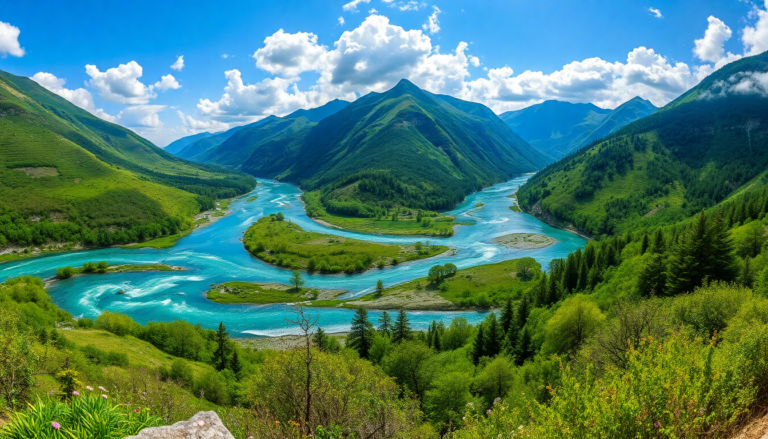Argomenti trattati
In a world increasingly dominated by urban landscapes and industrial growth, there remain pockets of untouched beauty where nature reigns supreme. One such place is Albania, renowned for its stunning scenery and rich biodiversity. The Vjosa River, often hailed as Europe’s last wild river, flows freely through this captivating country, unimpeded by dams or industrial barriers. This remarkable river retains its original purity, making it a rare gem for travelers seeking an authentic connection with nature.
Discovering the Vjosa River
The Vjosa River, known as Aoos in Greece, originates from the Pindus mountain range in northern Greece. It flows for over 270 kilometers before emptying into the Adriatic Sea, just north of the city of Vlorë, Albania. The most striking sections of the river lie in southern Albania, where it meanders through stunning canyons, lush forests, and ancient villages, creating a picturesque landscape that enchants all who visit.
Up until a few years ago, the Vjosa was under threat from significant industrialization projects, including plans for numerous dams along its course. However, recent developments signal a positive turn for the region. In 2023, Albania established the Vjosa National Park, the first of its kind in Europe, marking a significant victory for environmental protection and land preservation.
A sanctuary for biodiversity
This park is crucial not only for preserving the river’s natural state but also for safeguarding its unique ecosystem, which is home to over 1,100 animal species. Among these are lynxes, bears, wolves, and more than 140 bird species, including eagles and vultures. The Vjosa River thus serves as a vital habitat for many rare and endangered species, making it a significant area for wildlife conservation.
Adventure awaits in the heart of Europe
As Albania experiences a golden age of international tourism, the Vjosa region is a prime example of what makes the country special. Known as the “Blue Heart of Europe,” this area is a paradise for adventure enthusiasts, whether your passion lies in trekking, kayaking, wildlife photography, or sustainable tourism. Exploring the river’s banks offers encounters with ancient mule tracks, captivating hiking trails, and stone bridges—some of which are remarkable feats of ancient engineering, like the Kalogeriko Bridge and the Vradetho Staircase.
Visitors to the Vjosa can also discover numerous historical and cultural sites nearby. These include Orthodox monasteries, traditional villages, and places of spirituality, such as the Stomio Monastery, which tells the story of a land seemingly suspended in time. This blend of natural and cultural richness creates a diverse experience for travelers.
The Vjosa River as a symbol of resilience
The Vjosa River is more than just a waterway; it embodies a broader narrative of environmental resilience and conservation. It stands as a testament to the beauty of unspoiled nature in Europe and offers opportunities for outdoor activities like hiking and rafting, all while providing a safe haven for rare species.
Visiting the Vjosa today means engaging in an experience that respects the environment and celebrates the emotions stirred by nature’s wonders. In a time where many of Europe’s pristine areas are at risk of becoming mere memories, the Vjosa invites travelers to slow down, observe, and forge a connection with the natural world. It’s a reminder of what we stand to lose if we don’t protect these precious landscapes.

